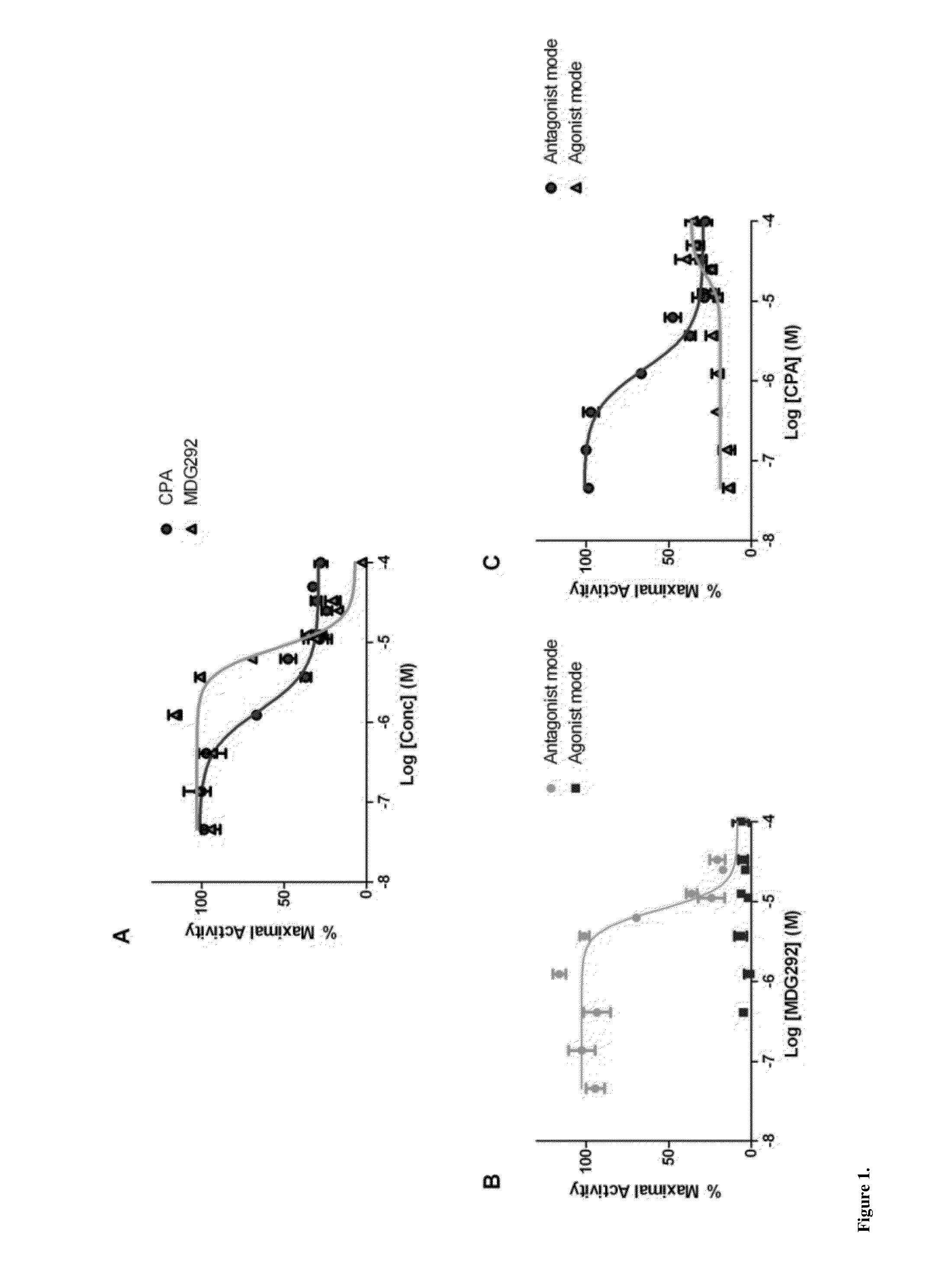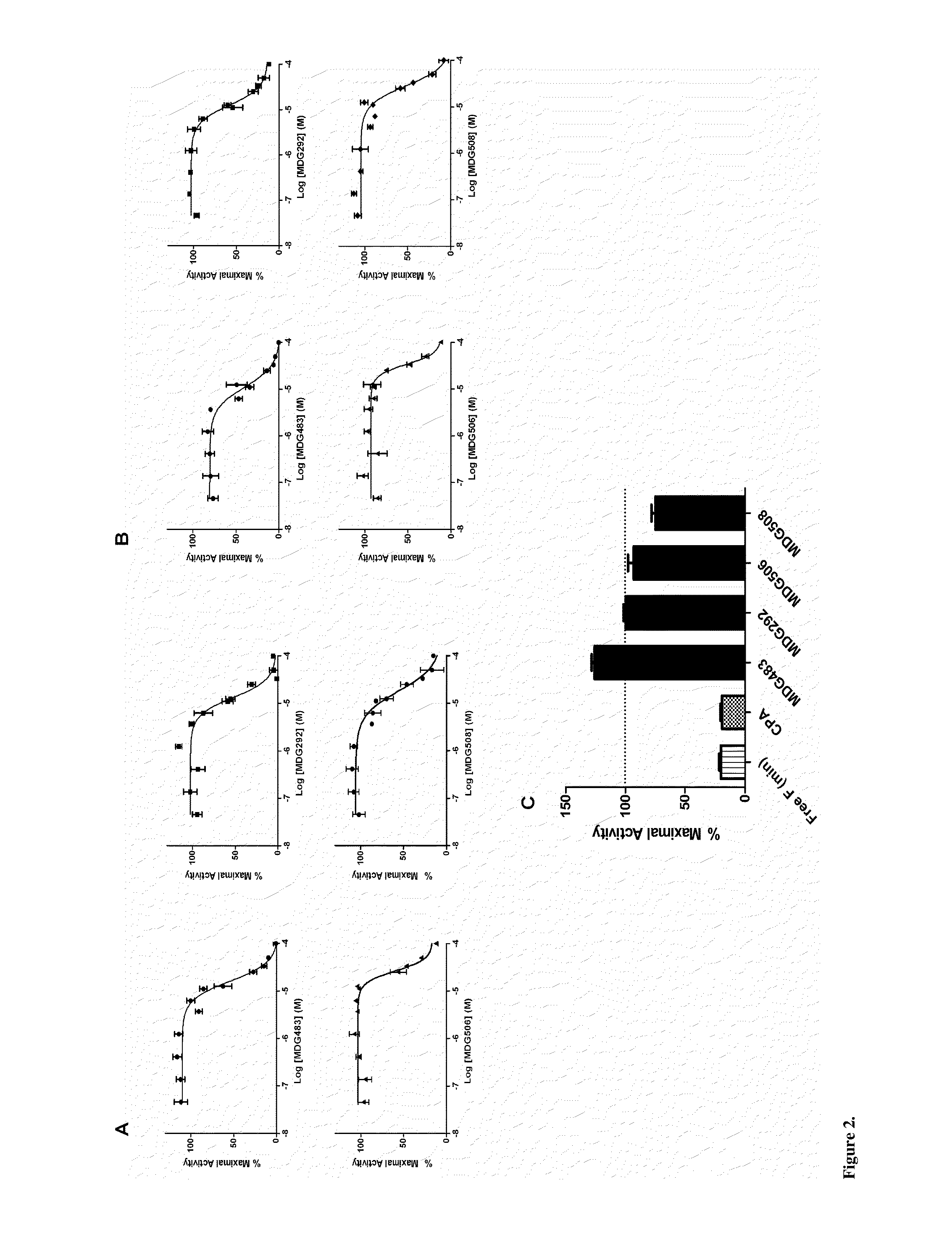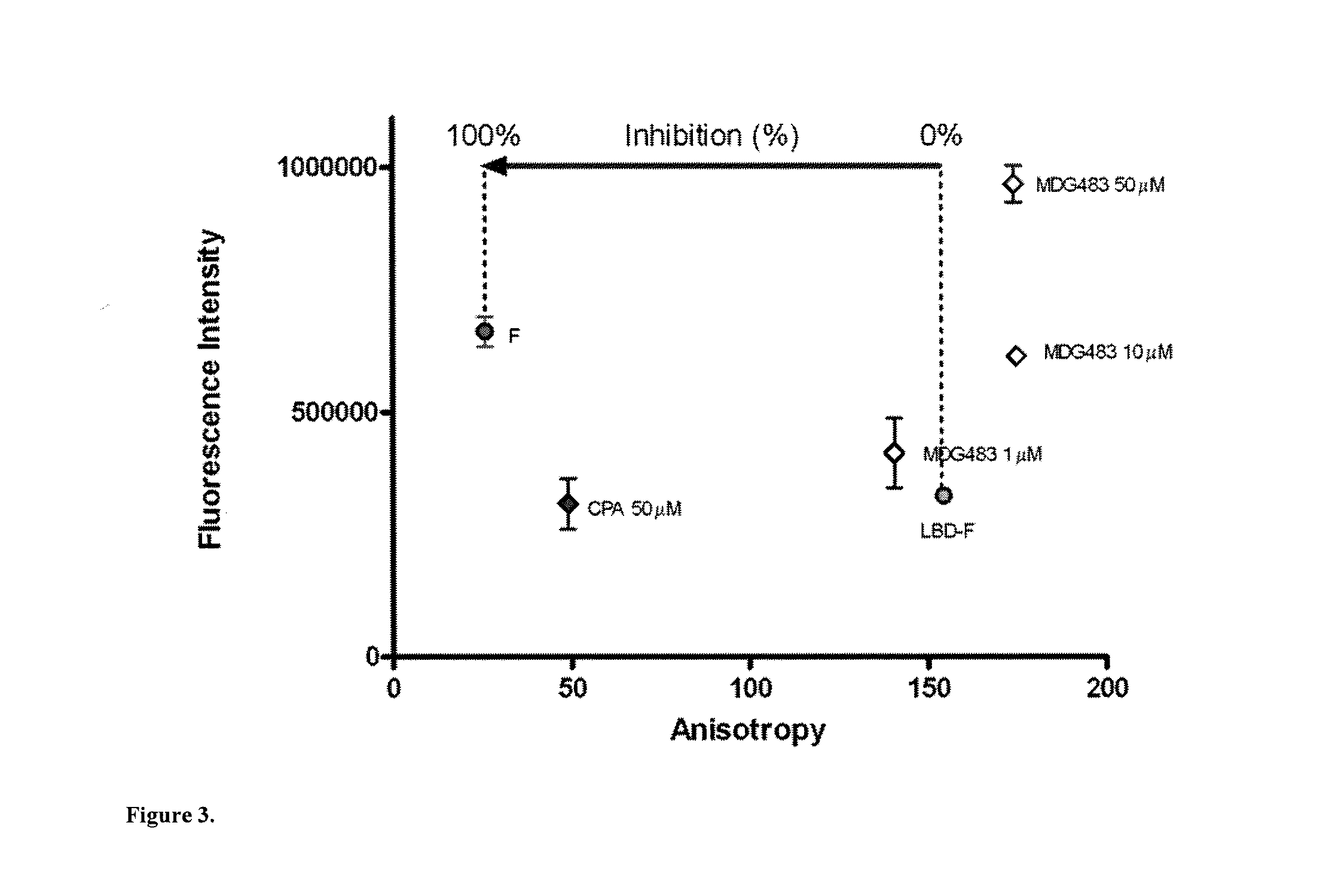Androgen receptor ligands
a technology of androgen receptors and ligands, applied in the field of nuclear receptors and small molecule ligands, can solve the problems of not allowing the activation of ar, affecting the effect of ar transcription, and increasing clinical pathologies, so as to reduce side effects and inhibit the transcriptional activity of ar
- Summary
- Abstract
- Description
- Claims
- Application Information
AI Technical Summary
Benefits of technology
Problems solved by technology
Method used
Image
Examples
Embodiment Construction
[0139]It should be readily apparent to one of ordinary skill in the art that the examples disclosed herein below represent generalised examples only, and that other arrangements and methods capable of reproducing the invention are possible and are embraced by the present invention.
Methodology—Virtual Screening
[0140]A virtual screen was designed to select compounds mapping onto the peptide binding surface (AF2) of the AR receptor, based on an ensemble of documented X-ray crystal structures: 1T73, 1T74, 1T76, 1T79, 1T7F, 1T7M, 1T7R &1T7T [Hur E, Pfaff S J, Payne E S, Gron H, Buehrer B M, et al. (2004) Recognition and accommodation at the androgen receptor coactivator binding interface. PLoS Biol 2:E274. Molecular Operating Environment (MOE) software was employed to preprocess the proteins and removal of the coactivator peptides from the complexes. An initial pharmacophore was generated using the MOE pharmacophore elucidator and considering the most significant features, which involved...
PUM
| Property | Measurement | Unit |
|---|---|---|
| pH | aaaaa | aaaaa |
| volume capacity | aaaaa | aaaaa |
| volume | aaaaa | aaaaa |
Abstract
Description
Claims
Application Information
 Login to View More
Login to View More - R&D
- Intellectual Property
- Life Sciences
- Materials
- Tech Scout
- Unparalleled Data Quality
- Higher Quality Content
- 60% Fewer Hallucinations
Browse by: Latest US Patents, China's latest patents, Technical Efficacy Thesaurus, Application Domain, Technology Topic, Popular Technical Reports.
© 2025 PatSnap. All rights reserved.Legal|Privacy policy|Modern Slavery Act Transparency Statement|Sitemap|About US| Contact US: help@patsnap.com



